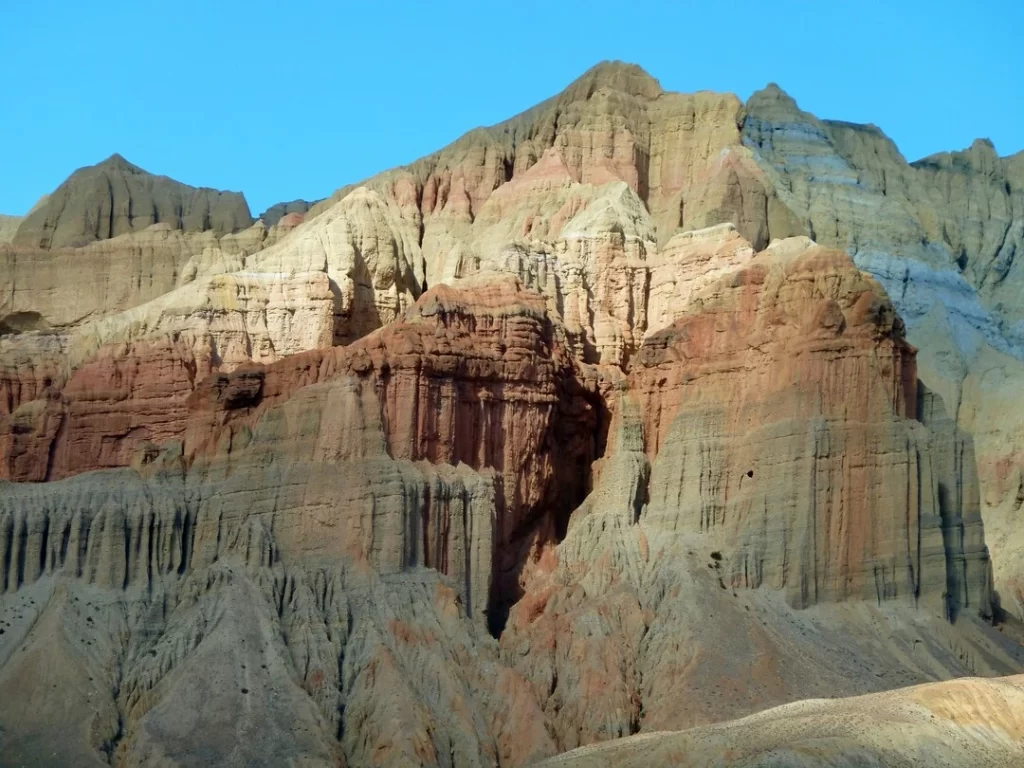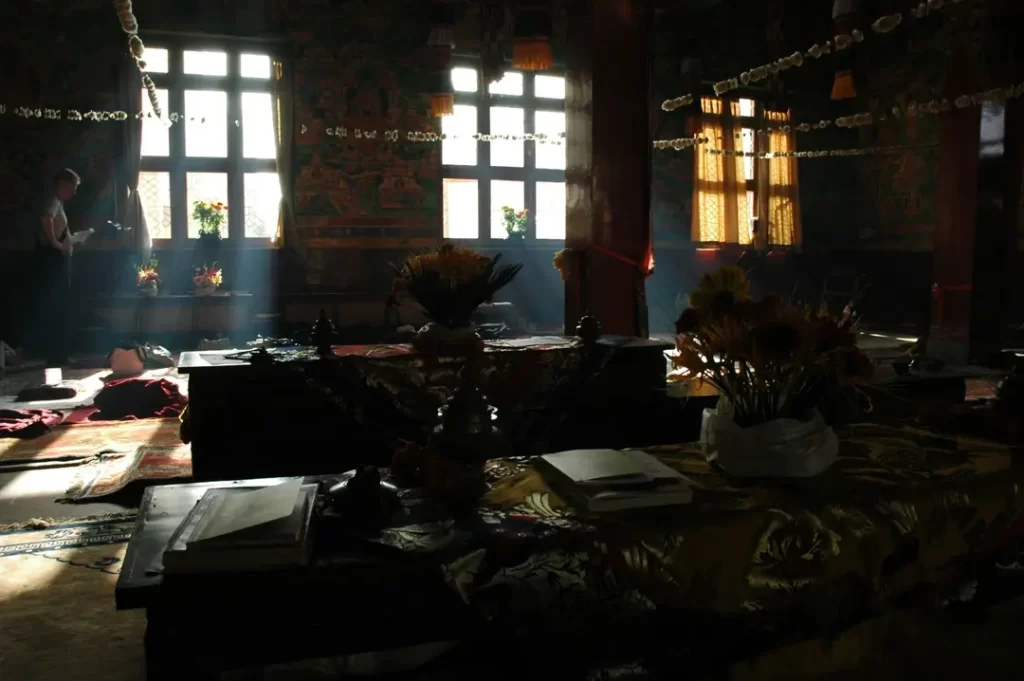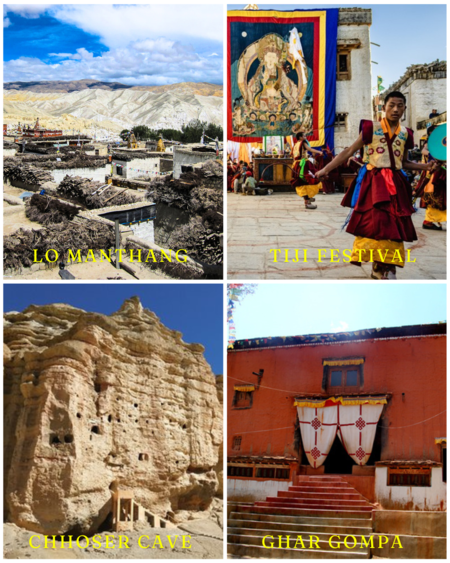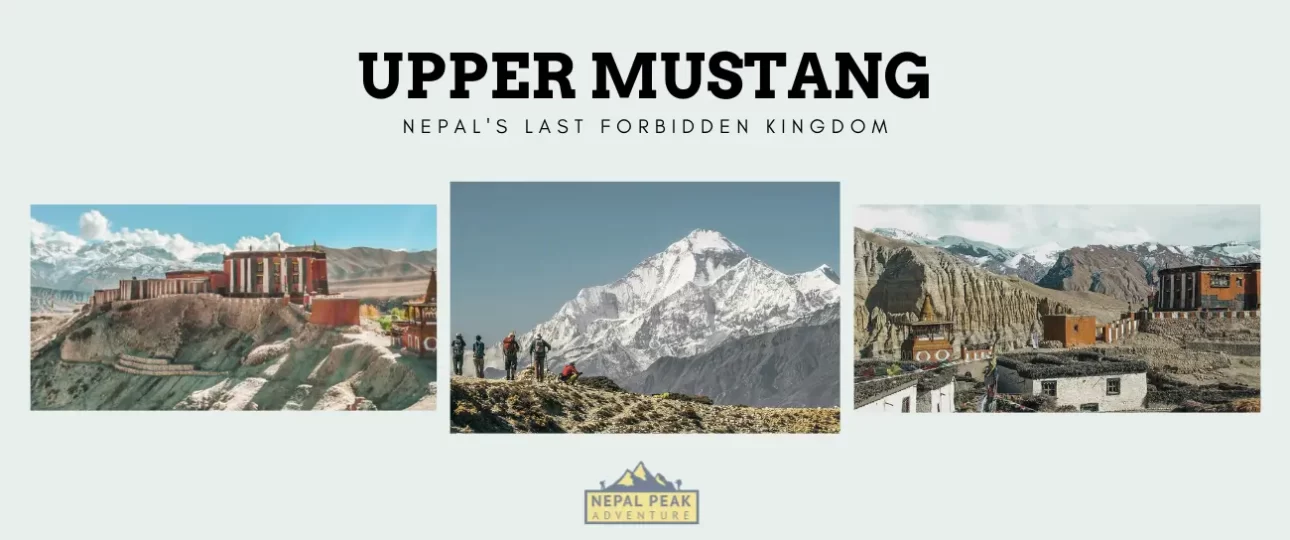Exploring Upper Mustang: Nepal’s Last Forbidden Kingdom
Nestled in the rain shadow of the Himalayas, Upper Mustang is one of Nepal’s most intriguing and remote destinations. Known for its stark, rugged landscapes, ancient Tibetan culture, and centuries-old monasteries, Upper Mustang is a place where history and nature come together in a breathtaking tapestry. This hidden gem, also known as the Last Forbidden Kingdom, remained closed to foreigners until 1992, preserving its mystique and allure.
Upper Mustang’s allure is not just in its physical isolation but also in its cultural seclusion. Unlike other regions in Nepal that have experienced significant outside influence, Upper Mustang has retained much of its traditional Tibetan Buddhist culture, largely untouched by modernization. This makes it a living museum, where visitors can step back in time and experience a way of life that has endured for centuries. The region’s rich history, dating back over a thousand years, includes the ancient Kingdom of Lo, which has left an indelible mark on the landscape and the people.
The journey to Upper Mustang is an adventure in itself, taking travelers through some of Nepal’s most dramatic and varied terrains. From the lush valleys of the lower regions to the high-altitude deserts of the upper areas, the changing scenery provides a visual feast for trekkers and explorers. The trek is not just about the destination but the journey, with each step revealing new vistas and stories.
In this comprehensive guide, we’ll explore the many facets of Upper Mustang, providing you with all the information you need to plan an unforgettable adventure.
Geography and Climate of Upper Mustang
Upper Mustang, located in the northern part of Nepal, lies in the rain shadow of the Annapurna and Dhaulagiri ranges, resulting in a semi-arid climate. The region is characterized by its high-altitude desert terrain, with deep gorges, towering cliffs, and striking red and orange rock formations. The Kali Gandaki Gorge, one of the world’s deepest gorges, cuts through this rugged landscape, providing dramatic and breathtaking scenery.
The climate in Upper Mustang is relatively dry, with annual precipitation averaging between 250-400 millimeters, mostly during the monsoon season from June to September. Summers (May to September) are mild, with daytime temperatures ranging from 16°C to 22°C, making it an ideal time for trekking. Winters (November to February), however, can be harsh, with temperatures often dropping below freezing, especially at night, and occasional snowfall at higher elevations.
Persistent strong winds are another notable feature of Upper Mustang, particularly in the afternoon. These winds, combined with the dry climate and unique topography, create an environment that is both challenging and fascinating for travelers. The best times to visit are during the pre-monsoon (March to June) and post-monsoon (September to November) seasons, when the weather is more stable, and the skies are clear, offering perfect conditions for exploring this hidden kingdom. Upper Mustang is located in the northern part of Nepal, bordering the Tibetan plateau.
The region is characterized by its arid, desert-like environment, with striking red cliffs, deep gorges, and dramatic rock formations. The Kali Gandaki River runs through the area, creating one of the world’s deepest gorges. The climate is relatively dry, with most rainfall occurring during the monsoon season (June to September). The best time to visit is from March to November when the weather is mild and stable.

History and Culture of Upper Mustang
Upper Mustang has a rich history dating back over a thousand years. It was once part of the Tibetan empire and later became the independent Kingdom of Lo, founded by Ame Pal in the 14th century. The region’s isolation helped preserve its Tibetan Buddhist culture, language, and traditions.
Ancient History
Upper Mustang was initially part of the Tibetan Empire, which flourished from the 7th to the 9th centuries. During this period, the region was a vital trade route between Tibet and India, facilitating the exchange of goods such as salt, wool, and spices. The influence of Tibetan culture and Buddhism began to take root in Upper Mustang, laying the foundation for its unique cultural heritage.
The Kingdom of Lo
In the 14th century, the Kingdom of Lo was established by Ame Pal, who is still revered as a cultural hero in Mustang. Ame Pal and his successors fortified Lo Manthang, the capital, turning it into a walled city that served as the political and cultural center of the region. The kingdom thrived for centuries, maintaining its independence and unique identity despite the political upheavals in surrounding areas.
Tibetan Buddhism
Buddhism in Upper Mustang is deeply intertwined with the region’s history and daily life. The predominant form of Buddhism practiced here is Tibetan Buddhism, specifically the Sakya and Nyingma sects. Monasteries play a crucial role in the community, serving as centers of learning, spiritual practice, and cultural preservation.
Monasteries and Gompas: Upper Mustang is home to numerous monasteries, many of which date back centuries. These include Thubchen Gompa and Jampa Gompa in Lo Manthang, known for their intricate murals and ancient manuscripts. Monks and nuns dedicate their lives to studying and preserving Buddhist teachings, rituals, and art forms.
Cultural Practices: The people of Upper Mustang observe various Buddhist festivals and rituals throughout the year. One of the most significant is the Tiji Festival, which commemorates the victory of good over evil. The festival features masked dances performed by monks, elaborate costumes, and vibrant community gatherings.

Art and Architecture
The art and architecture of Upper Mustang reflect its Tibetan heritage and the region’s natural environment. The architecture includes whitewashed houses, chortens (stupas), and intricately designed monasteries. Many buildings feature prayer wheels and prayer flags, which add to the spiritual ambiance.
Mural Paintings: The monasteries in Upper Mustang are adorned with stunning murals depicting Buddhist deities, historical events, and religious teachings. These murals, often painted with natural pigments, are a testament to the region’s artistic heritage.
Mani Walls and Chortens: Throughout Upper Mustang, you will find mani walls—long walls inscribed with Buddhist mantras and symbols. Chortens, or stupas, are another common sight, serving as religious monuments that hold sacred relics.
Language and Traditions
The language spoken in Upper Mustang is Loke, a dialect of Tibetan. Despite modern influences, the people of Mustang have preserved their language, traditional clothing, and customs. Their attire often includes thick woolen garments, boots, and intricately designed jewelry, reflecting both practical needs and cultural identity.
Main Attractions of Upper Mustang
Lo Manthang: The ancient walled city of Lo Manthang is the crown jewel of Upper Mustang. It features the royal palace, ancient monasteries, and a labyrinth of narrow alleys. The Thubchen and Jampa monasteries, adorned with exquisite murals and statues, are must-visit sites.
Chhoser Cave: These ancient cave dwellings, carved into the cliffs, offer a glimpse into the prehistoric lifestyle of Mustang’s early inhabitants. The caves are accessible via a short trek from Lo Manthang.
Ghar Gompa: This 8th-century monastery, located on the way to Lo Manthang, is one of the oldest in the region. It is believed to have been established by the legendary Guru Rinpoche.
Tiji Festival: This three-day festival, held in Lo Manthang, is one of Mustang’s most vibrant cultural events. It features colorful masked dances and rituals that depict the triumph of good over evil.

Trekking Routes to Upper Mustang
Trekking is the best way to explore Upper Mustang’s unique landscapes and culture. The classic Upper Mustang trek starts from Jomsom, accessible by a short flight from Pokhara. The trail follows the Kali Gandaki River, passing through traditional villages, ancient monasteries, and dramatic landscapes.
Jomsom to Kagbeni: The gateway to Upper Mustang, Kagbeni is a picturesque village with narrow alleys and whitewashed houses.
Kagbeni to Chele: The trek continues through arid landscapes, with stunning views of Nilgiri and Tukuche peaks.
Chele to Syangboche: This section offers a mix of landscapes, from red cliffs to lush green fields.
Syangboche to Lo Manthang: The final leg of the trek leads to the ancient walled city of Lo Manthang, where you can explore the royal palace and monasteries.
Permits and Regulations for trekking to Upper Mustang
Upper Mustang is a restricted area, and visitors need special permits to enter. The permits are issued for a minimum of 10 days, and trekkers must be accompanied by a licensed guide. The cost of the permit is USD 500 for the first 10 days, with an additional fee for each extra day. It’s also mandatory to have an Annapurna Conservation Area Permit (ACAP).

Accommodation and Facilities
Accommodation in Upper Mustang ranges from basic teahouses to more comfortable lodges in larger villages like Lo Manthang. While facilities are limited compared to other trekking regions in Nepal, the warm hospitality of the locals makes up for it. Most teahouses offer simple meals, including traditional Nepali and Tibetan dishes.
How to Get There
The journey to Upper Mustang begins in Kathmandu, the capital of Nepal. From there, you can take a flight to Pokhara, a popular tourist hub. The next leg of the journey involves a short flight or a long drive to Jomsom, where the trek begins. Flights to Jomsom are often subject to weather conditions, so it’s advisable to have flexible travel plans.
Practical Tips
Physical Fitness: The trek to Upper Mustang is moderately challenging, with altitudes reaching over 4,000 meters. It’s important to be in good physical condition and acclimatize properly.
Packing: Pack light but include essentials such as warm clothing, a good sleeping bag, trekking poles, and a first aid kit.
Respect Local Culture: Upper Mustang is a culturally sensitive area. Dress modestly, ask for permission before taking photos, and be respectful of local customs and traditions.
Conclusion
Upper Mustang is a destination like no other, offering a unique blend of natural beauty, rich history, and vibrant culture. Whether you’re a trekker, a history enthusiast, or simply someone looking to experience the magic of Nepal, Upper Mustang has something to offer. Its remoteness and exclusivity only add to its allure, making it a truly special place to visit. Plan your trip to this hidden kingdom, and prepare to be captivated by its timeless charm.



